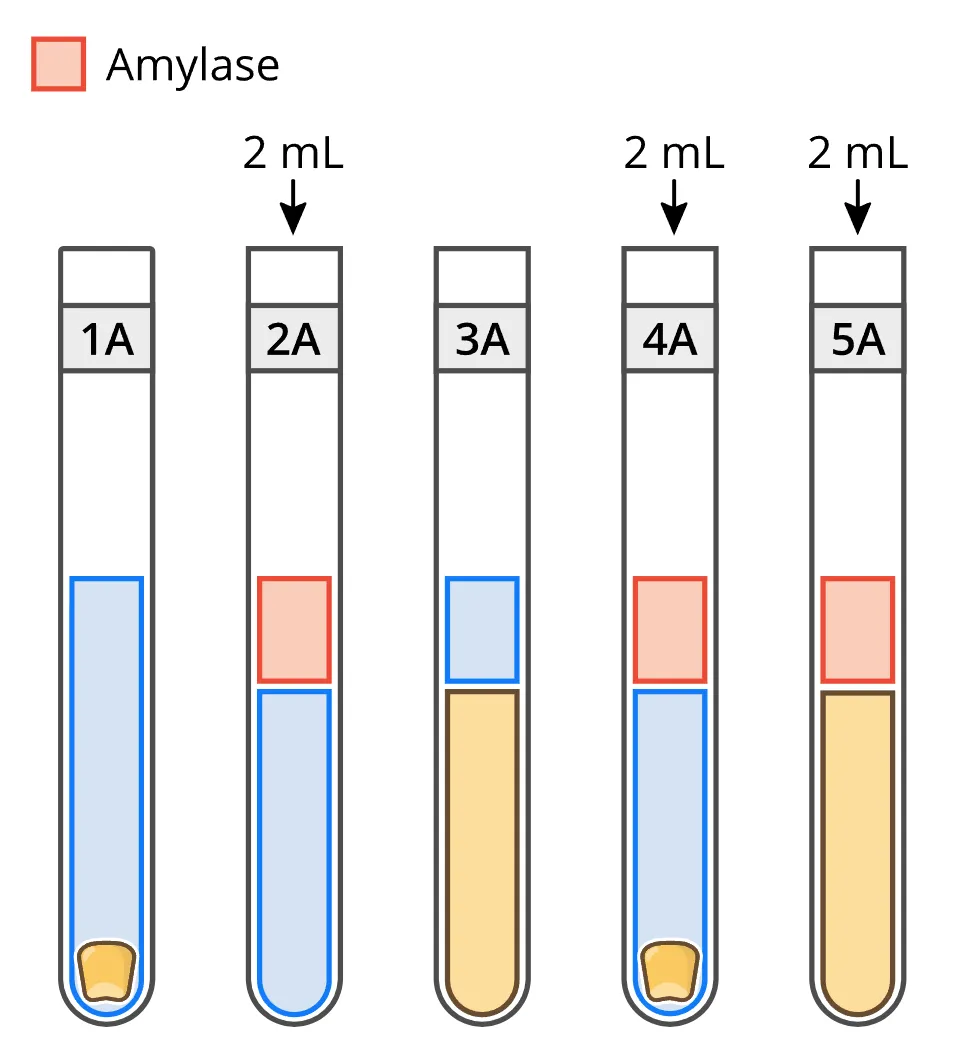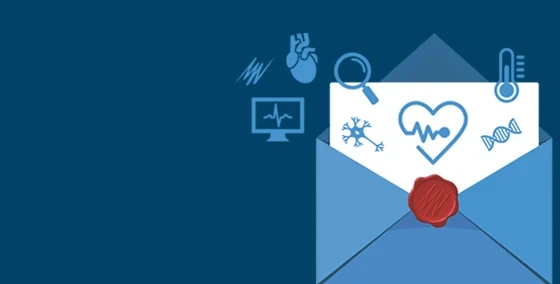Engage your undergraduate physiology students with this hands-on digestive system lab practical investigating the impacts of simulated mechanical and chemical digestion on a selection of real foods.
For our latest physiology lab and pre-lab prep, we worked with Dr. Barbekka Hurtt (Teaching Associate Professor, Department of Biological Sciences, University of Denver) to develop an interactive exploration of mechanical and chemical digestion across a variety of real foods. Find it now in our Lt Human Physiology Collection!
In this interview, we chatted to Barb about her teaching philosophy, how the digestion module was developed, and her tips for teachers looking to incorporate technology into their teaching.
Take a quick tour through the Mechanical and Chemical Digestion lab in the video below, and find out what you and your students can expect from this fresh look at a complex system.
What’s in the Mechanical and Chemical Digestion module?
The digestive system lab looks at the efficiency of mechanical-only, chemical-only, and a combination of mechanical and chemical digestion of three major macromolecules: carbohydrates, proteins, and lipids. To encourage peer learning, one group of students will complete the experiment for one macromolecule, and will share their data with other groups to produce a complete data set.

Students gain experience with a variety of lab equipment while investigating the simulated digestion of different foods.
Arriving in the lab prepared
Students prepare for the digestive system lab practical with the Pre-lab Prep, which provides key information about the gastrointestinal (GI) system, GI structures, accessory organs, mechanical and chemical digestion, and macronutrients and their monomer units. This prepares them to achieve the learning objectives of the digestive system lab itself:
- Identify the three major classes of macronutrients, their monomer units, and indicator tests that can be used to detect these monomers in solution
- Investigate the effects of mechanical and chemical digestion on each type of macronutrient
- Describe the importance of digestive enzymes in the breakdown of carbohydrates, proteins, and lipids into their monomer units
- Analyze experimental results to determine the conditions under which digestion is most effective

Students are encouraged to perform retrieval practice with Challenge questions on key concepts.
Once in the lab, students will simulate mechanical digestion by grinding, chopping, or shaking food substances, and chemical digestion by using enzymes secreted by the organs of the GI tract.
By performing color-indicator tests, students will be able to infer how much substance has been digested in each trial. In an example of transparent pedagogy, students are also explicitly told which skills they will develop by working through the digestive system lab activities:
Developing technical and transferable skills
- Group work
- Executing experimental protocols
- Critical thinking
- Data analysis
Related: Overcoming group work challenges: a practical approach »
The importance of experiential learning
As a Teaching Associate Professor who started in education in 2006, Barb has refined her teaching approaches over time.
“One thing that's changed about my teaching over time is, I have absolutely bought into the idea that experiential education is far more important than didactic education alone. In fact, I would love it if all of my classes occurred in the lab, so that while we were learning stuff we could actually try it in the lab, right?” says Barb.
In the Mechanical and Chemical Digestion module, students have the opportunity to get hands-on by simulating both mechanical and chemical digestion. Instead of substances like powdered albumin, Barb also made sure to include diverse food sources for students to experiment with, so that students of different ethnic backgrounds can better relate to the lab activities.

Students investigate the effects of mechanical and chemical digestion on each type of macronutrient by following a complex protocol to fill test tubes and compare a variety of digestive treatments.
“I think we tried a dozen different types of foods; I was trying to bring in foods from different ethnic backgrounds so that students might see some of their preferred food choices reflected in the lab inquiry experience. This is also an opportunity for students to build on this lab and potentially suggest food substances to test.”
“It doesn't work out perfectly, but that was the inspiration of bringing real foods to the table, having them simulate mechanical digestion, having them simulate chemical digestion, and then basically say, ‘Hey, what works best and why? Why does it matter that you have teeth that are in good shape, that can help do the mechanical grinding, or muscles that work well, that allow you to chew. What happens if there are disorders with the function of the stomach or small intestine…how does that impact the goal of digestion and being able to absorb nutrients?’ So trying to bring in some more real-world aspects that the students could actually relate to during the process of learning science.”
How students have changed post-COVID
After the pandemic, many students have experienced prolonged periods of studying from home. Barb has observed that students appear hesitant to engage, and are fearful of making mistakes.
One way to support students who feel unsure is to emphasize the fact that they are beginners and that mistakes are inevitable. Barb explains, “I'm trying to work with both my teaching assistants and the students to say, 'But aren't you here to get an education? If you could already do everything perfectly, wouldn't this, then, be a waste of your time and your money and your effort? So my job is to constructively challenge you. Your job is to try and step up as best as you can, or as much as you want to.'”
Related: Talking Teaching: Pedagogy of care and the role of faculty in student mental well-being »
Another way to support students is by letting them know that example data are available. Having access to a set of validated data means that students have a fall-back if their experiment fails. The new Digestion lab module features a complete set of example data for all carbohydrate, protein, and lipid activities.
Modernizing an undergraduate digestion lab
In her research while developing the new Digestive System lab, Barb found that, “there were very few undergraduate level, true digestive physiology labs that weren’t pretty much all the same.”
Barb’s previous Digestive System lab involved a generic online component on simulated pH balance, and a paper-based lab protocol and assessment that had to be uploaded to the learning management system. Now, everything is done in Lt - the pre-lab prep, lab protocol, assessment, grading, and learning analytics.
Common issues when learning about digestive physiology
Barb has seen many students struggle with complex physiological systems in her years of teaching. She explains, “One of the most common things that students struggle with learning is the complexity of the digestive process. Oftentimes they can appreciate mechanical [digestion], because that typically comes after we've talked about, for example, skeletal muscles. And the idea that if you contract a muscle, it does something. You've got this muscle that surrounds the tubes. If you contract it, and it squeezes, it causes friction [and] breaks stuff up.”

Students explore the different stages of digestion with clear illustrations in Lt.
“Got that - oh, but wait, now, I have to think about that in addition to different pH, and then in addition to different types of enzymes. And oh, wow! There are 3 or 4 or 5 things that might actually impact the digestion of carbohydrates, and those could be very different from the 3 or 4 or 5 things that would lead to the successful digestion of a lipid or a protein. And then you add in hormones, and layer on the microbiome, and talk about minds exploding! We've got mechanical, chemical, enzymes, hormones, and now we've got to think about the microbiome?”
“But I think it is [this way] for a lot of us, until we get that opportunity to start to break it down into its elemental pieces. I think it [also] helps them to realize that it's a single system which is amazingly complex, and that it’s also amazingly intriguing that for many people [the digestive system] does work so well for such a large part of our life and has an impact on our whole body.”
The new Digestive System lab counters this issue by providing concise background information on key components and processes relevant to digestion. Additionally, by splitting the lab class into groups and having students work on the digestion of one macronutrient via hands-on activity, and explore the digestion of the two other macronutrients via simulation, students can learn about this complex system in a scaffolded way.
Tips for teaching with technology
Based on her experience using a variety of edtech tools across her 17-year teaching career, Barbekka shares the following tips for teachers contemplating introducing tech to their classrooms and laboratories:
- Try one thing at a time. “Don't feel pressured to use technology in any particular way, but if there's something that you're intrigued about from a technology point of view, take the time to set up a framework for how you see this technology really adding value.”
- Be patient. “Pick something that intrigues you and think about why this would be valuable, but also be patient as you implement it, because I don't really know of a single person for whom it's gone perfectly from the moment they tried it. So just be patient with yourself. Bring that creativity, but be patient.”
How can I access the module?
For those already using Lt, you can import the Mechanical and Chemical Digestion module resources as part of the Lt Human Physiology Collection.
New to Lt? No worries! For those wanting to start using these lessons and labs immediately, you can sign up for our free trial.

Dr. Barbekka Hurtt,
Teaching Associate Professor,
Department of Biological Sciences,
University of Denver (DU).
Barbekka graduated with a PhD degree in Neuroscience from the University of Colorado at Boulder in 2002. Teaching since 2006, she is currently a Teaching Associate Professor at the University of Denver, and received the Sam Drogo Technology in the Classroom Award from the Human Anatomy and Physiology Society (HAPS) in 2017.
A long-time user of Lt, Barbekka collaborated with Peter Nimlos (PhD candidate) and the ADInstruments team to develop the new Mechanical and Chemical Digestion module in the Human Physiology Collection in Lt.
Additional resources:
- New for physiology educators: Take a look inside our Reproductive Physiology module...»
- New for physiology educators: Take a look inside our Hoffmann’s Reflex Lab… »
- New for physiology educators: Take a look inside our Endocrine Physiology Lab… »
- What’s it like to use Lt as a student? “Great fun…the hands-on side of it really accelerates the learning” »

